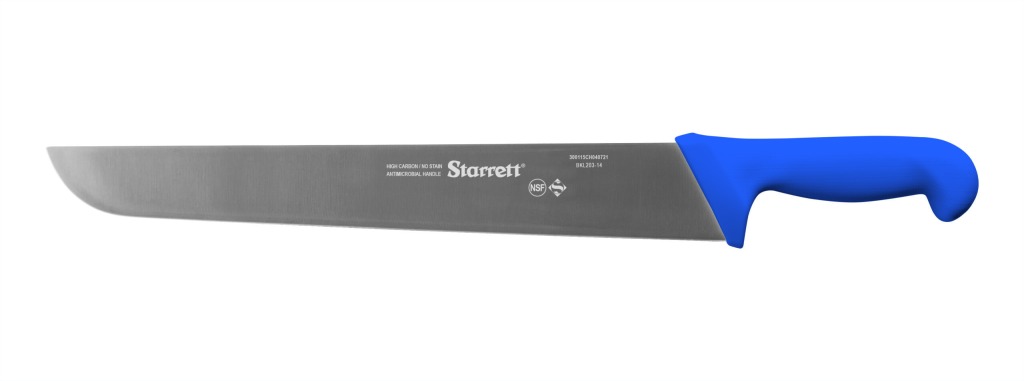In the realm of culinary craftsmanship, few tools are as revered as the butcher knife. With its robust blade, razor-sharp edge, and ergonomic handle, the butcher knife is the go-to tool for professional butchers and home cooks alike. In this guide, we’ll explore the artistry behind butcher knives, uncovering their unique features, applications, and the time-honored traditions that have made them indispensable in the kitchen.

- The Anatomy of a Butcher Knife:
- Blade: Butcher knives are characterized by their large, heavy-duty blades, typically ranging from 6 to 12 inches in length. The blade is thick, wide, and slightly curved, allowing for precise slicing, chopping, and dicing of meat and poultry.
- Handle: Butcher knife handles are designed for maximum comfort and control during prolonged use. Look for handles made from materials like wood, plastic, or composite, with ergonomic contours and non-slip grips to minimize hand fatigue and enhance safety.
- Types of Butcher Knives:
- Cleaver: The cleaver is a versatile butcher knife with a thick, rectangular blade and a sturdy, weighty design. Cleavers are used for chopping through bones, joints, and tough cuts of meat, as well as for smashing garlic and other ingredients.
- Breaking Knife: Breaking knives feature long, narrow blades with pointed tips, designed for breaking down large cuts of meat into smaller, more manageable pieces. They are ideal for tasks such as trimming fat, removing silverskin, and portioning meat.
- Applications and Techniques:
- Breaking Down Meat: Use a butcher knife to break down whole carcasses or large cuts of meat into smaller, more manageable portions. With its robust blade and sharp edge, the butcher knife makes quick work of tough cuts like brisket, ribs, and pork shoulder.
- Precision Slicing: Achieve uniform, paper-thin slices of meat and poultry with the precision of a surgeon using a butcher knife. Whether slicing roasts, steaks, or poultry breasts, the sharp, wide blade of the butcher knife ensures clean, even cuts every time.
- Chopping and Dicing: From chopping vegetables to dicing onions, the butcher knife is a versatile tool for a wide range of kitchen tasks. Its hefty blade and sturdy construction make it ideal for chopping through tough root vegetables, squash, and other hardy ingredients.
- Care and Maintenance:
- Hand wash butcher knives with mild soap and warm water, avoiding harsh detergents and abrasive scrubbers.
- Dry knives thoroughly after washing to prevent corrosion and rust.
- Regularly sharpen butcher knives to maintain a razor-sharp edge, using a sharpening stone or honing rod.
- Store butcher knives in a knife block, sheath, or magnetic strip to protect the blade and prevent injuries.
- Choosing the Right Butcher Knife:
- Consider the type of meats and cuts you frequently work with when selecting a butcher knife. Choose a cleaver for heavy-duty tasks like chopping through bones, or opt for a breaking knife for precise slicing and portioning.
- Look for a butcher knife with a sturdy, durable construction and a comfortable handle that provides a secure grip and allows for precise control during cutting tasks.
Conclusion: With its unmatched versatility, precision, and durability, the butcher knife is an indispensable tool in any kitchen, empowering you to master the art of butchery and elevate your culinary creations to new heights. By understanding the unique features, applications, and care tips outlined in this guide, you can unlock the full potential of your butcher knife and achieve professional-level results with every cut.